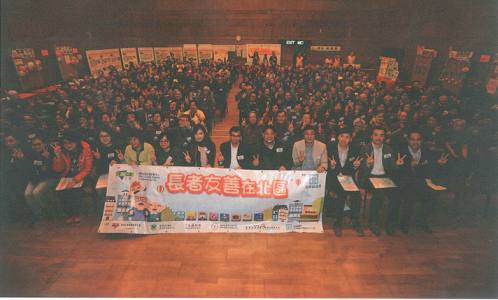Age-Friendliness in North District



To enhance the understanding of age-friendliness among residents of all ages in North District, the Hong Kong Young Women’s Christian Association (HKYWCA) Ellen Li District Elderly Community Centre, in collaboration with the District Council and several elderly centres in the district, implemented the project “Age-Friendliness in North District”, comprising several programmes and activities that helped promote age-friendliness in the district.
In the beginning, 140 elderly volunteers were recruited and trained to be “Age-friendly Ambassadors”. Together with secondary and primary students, the ambassadors conducted on-site inspections of the social and physical facilities in the district to identify areas for improvement. The ambassadors also visited 238 elderly people living alone to conduct home safety assessment and to raise their awareness of home safety.
A series of activities were held throughout the project period. Four subject talks were conducted on the topics “Age-Friendliness”, ”Outdoor Spaces & Buildings”, “Housing” and “Social Participation” respectively with a total of 821 participants. These talks aimed to help the elderly understand the concept of age-friendliness and know more about what support services were available for them. In addition, to encourage the elderly to access health-related information through the Internet, a course on the use of smartphones and tablets was conducted with 189 participants. Also, to promote healthy lifestyles, a course on floor curling, a team sport suitable for all ages with different levels of abilities, was conducted with 100 participants.
In the final stage, an educational carnival cum community forum was held to enhance public awareness and to encourage public participation in building an age-friendly community.
Main target group: Both younger and older people (i.e. intergenerational)
Other target group(s): Vulnerable older people living alone
Sector(s): Other
Other sector(s): Social service, public education
Desired outcome for older people:
Learn, grow and make decisions